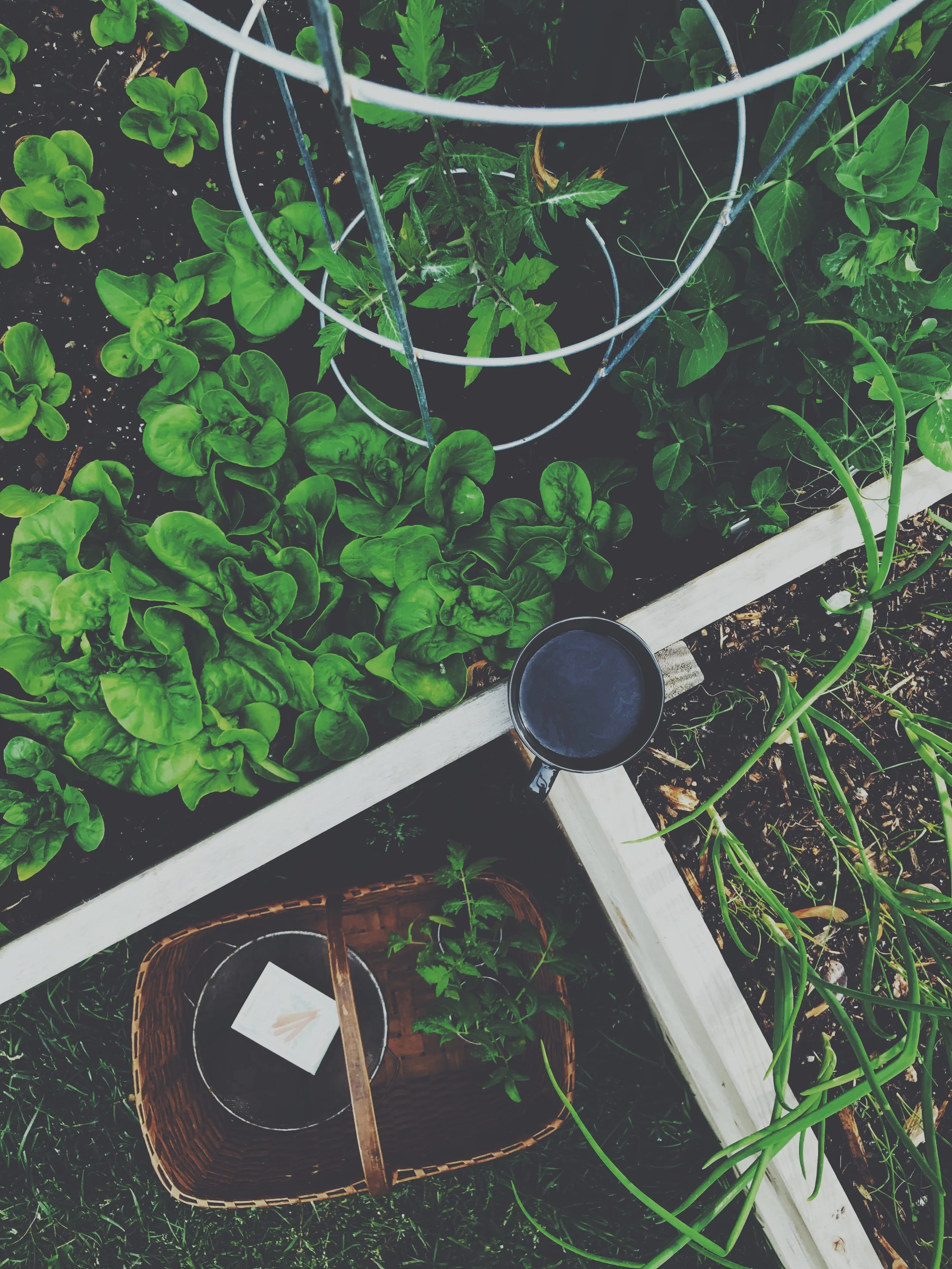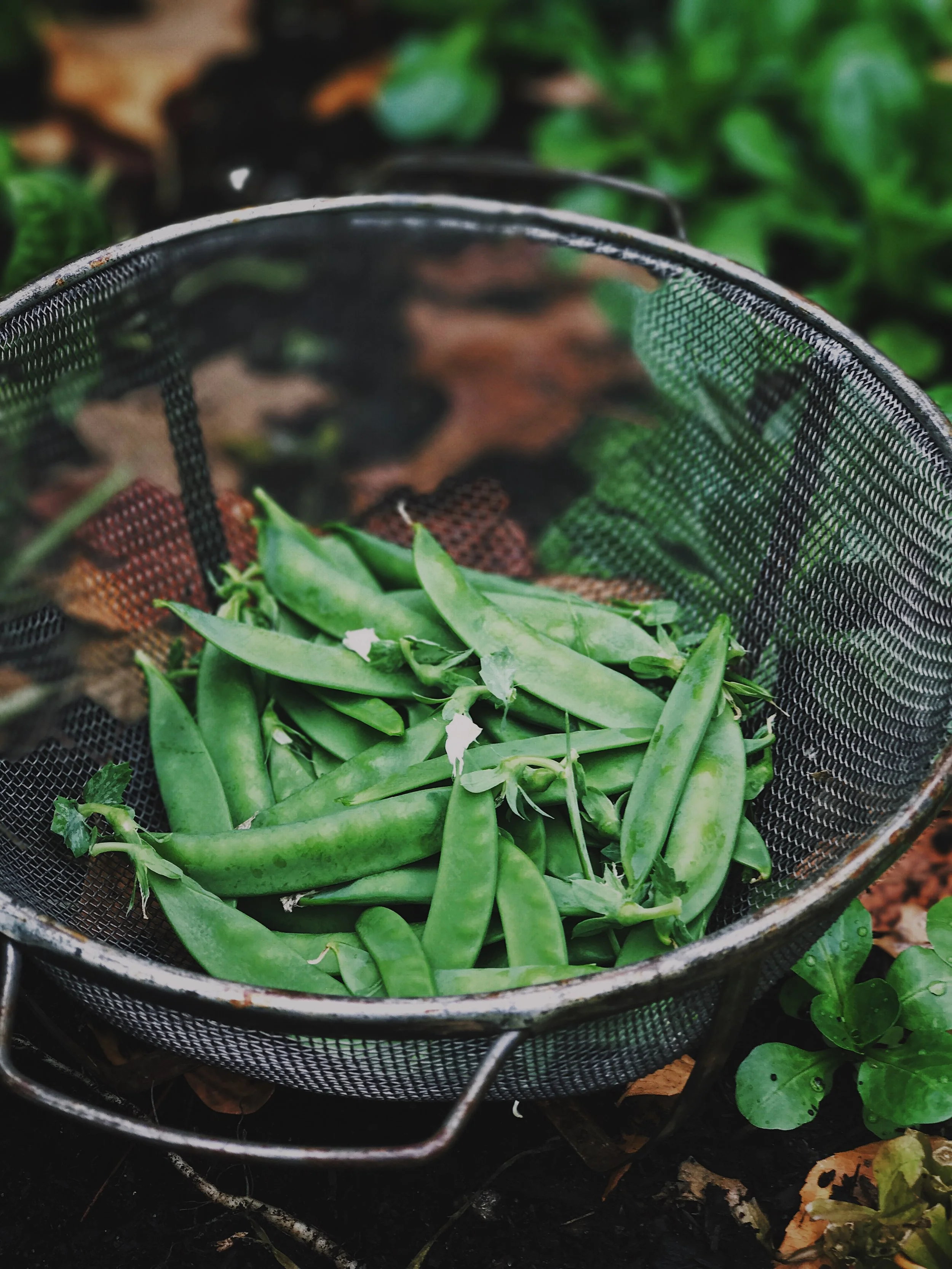Lettuces & Other Greens
In past seasons, I considered greens to be a garden staple, and grew the most basic cut-and-come-again lettuce and butterhead lettuce. After having enjoyed a few salads while traveling in Europe, I realized that the world of salad greens is vast and full of various textures, flavors, colors and forms. I am excited to branch out this growing season and try out a range of different greens.
In the spring, I like to plant cut-and-come-again lettuce, mustard greens, and head lettuce in the fruit beds. Most fruiting vegetables should not be planted in the garden until the temperature outside is above 50-55 degrees, around late May, early June. As these plants go in the ground, they will still be small, and not take up the full amount of space given them in the garden for a few more weeks, leaving room for greens to continue growing until the weather gets too hot and they start to bolt. This year, I am growing Mild Mustard Mix and Farmers Market Lettuce Blend in the zucchini patch, and Blush Batavians in the tomato patch. I enjoy head lettuce in the tomato patch as the tall plants shade the lettuce heads as they continue to fill out in early summer.
I have chosen these three greens to plant in the spring as they bring unique flavors and textures to spring salads. The Blush Batavians are a crispy variety of lettuce, bringing some crunch to contrast the tender leaves of the Farmer's Market Lettuce Blend. The Mustard Greens actually taste like mustard, bringing a spicy flavor to spring salads.
Aside from salad greens, I enjoy growing a few type of greens that can be used within both salads and soups. Fresh spinach lightly wilted in a soup adds wonderful texture and a nice bright pop of green.
This year, I will be growing spinach as a spring and fall crop. I am going to grow 'Gangbusters' Longstanding Spinach early in the spring before the bush bean seeds go in, harvesting the baby spinach leaves for salads, and as a succession planting after the cabbages come out of the garden in early July. I am not a fan of leaving empty space in the garden, and as greens are delicious young or fully mature, I figured, why not try it out!
One unique green I love to cook with is Rainbow Swiss Chard. It is beautiful to grow, as the stalks come in a range of bright colors. I have not grown much of this in the past, so I am looking forward to dedicating a row within the brassicas patch to chard. Chard should not be planted until the evening temps are above 50 degrees, so it will be a bit before it is seeded in the garden. Chard leaves can be harvested from the main plant, that will continue to grow and produce throughout the summer and fall.
Last be certainly not least are my winter greens. Winter greens are a little bit new to me, and am excited to invest more space in getting different colors and textures for late season salads. Winter greens and lettuces are sown in late summer, and can be harvested after a few light frosts. This year I will be growing Crispy Winter Greens as a succession planting in the onion patch along with the watermelon radishes in late July, and Gala Mâche as a succession planting in the row of cabbage, along with spinach in early July. Mâche is a green I started growing last season after my husband and I went to Italy, where we enjoyed the succulent, nutty green in pear and parmesan salads. It is a slow growing lettuce, and can actually be harvested frozen, making it a perfect green to grow in Minnesota, where it gets cold pretty quickly in the fall.











